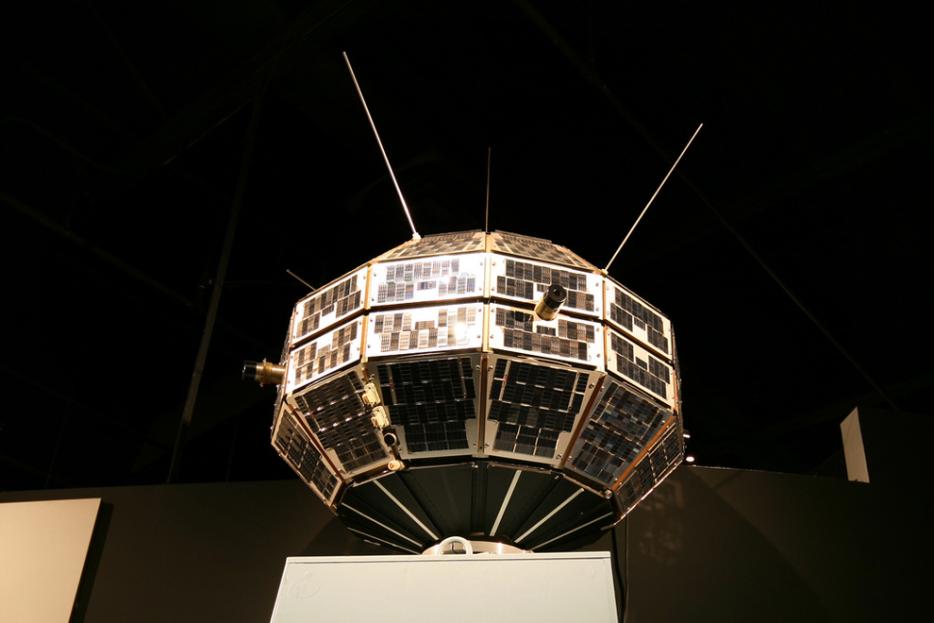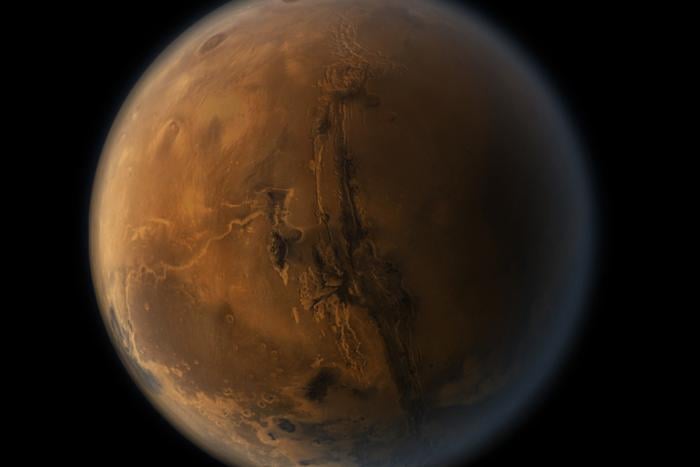This week's guest blogger is Terry Fallis, author of the recently published Up and Down.
I suspect that few Canadians know very much about our nation’s contribution to space science. Sure, the chests of many of us swell with pride when we see the famous “Canadarm” doing its thing in the space shuttle’s cargo bay. But beyond that? Well, beyond that lies a great Canadian story of innovation, discovery, and ingenuity in the early years of the space race.
In fact, tomorrow, September 28, 2012, marks the fiftieth anniversary of the launch of Alouette, Canada’s first satellite. In the fall of 1962 Canada became just the third nation, after the U.S. and Russia, to build a satellite and operate it successfully in earth orbit. Had it only sent back important scientific data about the ionosphere for three months, it would have been deemed a success. But instead it logged ten years of nearly flawless operations, shut down after having set a record for length of service in orbit. It was an extraordinary achievement, a distinctly Canadian achievement.
In the last fifty years, Canada has continued its pioneering ways in the development of scientific and communications satellites. There was Alouette 2 in ’65, ISIS 1 in ’69, ISIS 2 in ’71, ANIK in ’72, Hermes in ’76, and a host of others. Then in 2003, the Canadian Space Agency (CSA) launched the MOST space telescope and SCISAT. And the tradition continues a half a century after Alouette as the CSA and the Department of National Defence prepare for the launch Sapphire and NEOSSat later this year. There is also the Canadian content on the Mars Curiosity Rover currently driving across the surface of Mars. Advanced image sensors, a robotic arm, and the alpha particle x-ray spectrometer on the rover were all developed in Canada.
Of course, we Canadians don’t just do satellites. Since 1984, we’ve been putting Canadians in space. The Canadian Astronaut Program was established in 1983. After wading through more than 4,000 applications, six Canadians were chosen to represent our country as part of NASA’s shuttle voyages: Marc Garneau, Roberta Bondar, Ken Money, Steve MacLean, Bob Thirsk, and Bjarni Tryggvason. All but one of the original six flew missions. A second team was recruited in 1992, giving us now familiar names like Julie Payette, Dave Williams, and of course, Chris Hadfield. (Hadfield is now preparing for a December launch from Star City in Russia to spend six months on the International Space Station.)
Then there’s the Canadarm—formally given the funky handle, Shuttle Remote Manipulator System—developed by the then Canadian company, SPAR Aerospace Ltd. It was launched into orbit aboard the original space shuttle, Columbia, in November of 1981. An engineering marvel, the Canadarm was used to help deploy and retrieve satellites, and maneuver various payloads in the shuttle’s cargo bay. The word “Canada” along with our flag were emblazoned across the arm giving many of us an extra spring in our step.
In 1989, the creation of the Canadian Space Agency signaled our national commitment to space exploration. In 2001, Marc Garneau, Canada’s first astronaut, took over as President. Today, former astronaut, Dave Williams, serves as the CSA’s president.
I know what some of you are thinking. Who cares? What does it all mean? Why have you bothered to give us this snapshot of Canada’s history in space?
Good questions, all.
Well, we have a solid track record in space, the envy of many nations. In general, I don’t think Canadians have a clear understanding of our leadership in this emerging field or why it’s important. For a couple of centuries now, Canada has been known primarily as a nation of hewers of wood and drawers of water. We are blessed with, and our nation has been forged from, a rare bounty of natural resources. But wood, water and wheat won’t secure our future. In this global economic climate, it seems clear that the future will be led by nations that have mastered the emerging sectors, those driven by advanced science and technology. We have a history of achievement in space, even if a good part of the population knows little about it. I, and many others, want to see Canada honour this history by strengthening its future in space. We need to invest more in the work of the Canadian Space Agency. We need to collaborate more with other space nations. Ultimately, Canada should be playing a leading role in exploring and understanding the universe. It’s a powerful platform for global cooperation at a time when more than ever, we need nations to come together. The scientific research required will yield new breakthroughs and economic benefits that will make our lives on Earth easier and better. It’s the classic win-win. Not to mention that it’s just very, very cool.
In tomorrow’s post, we’ll take a look ahead.
--
Photo by Musée des sciences et de la technologie du Canada






